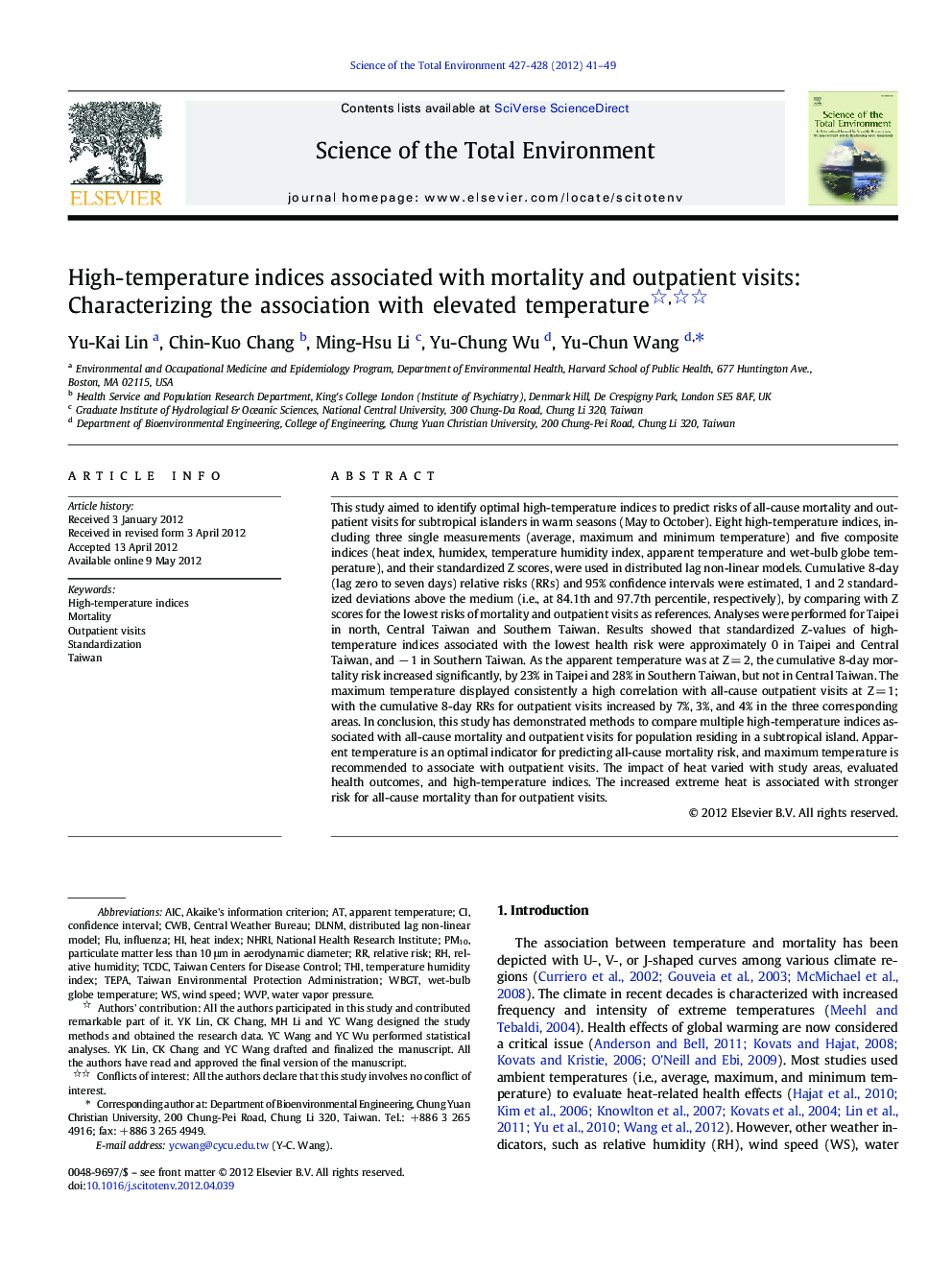| کد مقاله | کد نشریه | سال انتشار | مقاله انگلیسی | نسخه تمام متن |
|---|---|---|---|---|
| 4429407 | 1619824 | 2012 | 9 صفحه PDF | دانلود رایگان |

This study aimed to identify optimal high-temperature indices to predict risks of all-cause mortality and outpatient visits for subtropical islanders in warm seasons (May to October). Eight high-temperature indices, including three single measurements (average, maximum and minimum temperature) and five composite indices (heat index, humidex, temperature humidity index, apparent temperature and wet-bulb globe temperature), and their standardized Z scores, were used in distributed lag non-linear models. Cumulative 8-day (lag zero to seven days) relative risks (RRs) and 95% confidence intervals were estimated, 1 and 2 standardized deviations above the medium (i.e., at 84.1th and 97.7th percentile, respectively), by comparing with Z scores for the lowest risks of mortality and outpatient visits as references. Analyses were performed for Taipei in north, Central Taiwan and Southern Taiwan. Results showed that standardized Z-values of high-temperature indices associated with the lowest health risk were approximately 0 in Taipei and Central Taiwan, and − 1 in Southern Taiwan. As the apparent temperature was at Z = 2, the cumulative 8-day mortality risk increased significantly, by 23% in Taipei and 28% in Southern Taiwan, but not in Central Taiwan. The maximum temperature displayed consistently a high correlation with all-cause outpatient visits at Z = 1; with the cumulative 8-day RRs for outpatient visits increased by 7%, 3%, and 4% in the three corresponding areas. In conclusion, this study has demonstrated methods to compare multiple high-temperature indices associated with all-cause mortality and outpatient visits for population residing in a subtropical island. Apparent temperature is an optimal indicator for predicting all-cause mortality risk, and maximum temperature is recommended to associate with outpatient visits. The impact of heat varied with study areas, evaluated health outcomes, and high-temperature indices. The increased extreme heat is associated with stronger risk for all-cause mortality than for outpatient visits.
► Apparent temperature was the optimal high-temperature index in temperature–all-cause mortality study.
► Maximum temperature was the optimal high-temperature index in temperature–all-cause outpatient visits study.
► Extreme heat is associated with stronger risk for all-cause mortality than for outpatient visits.
Journal: Science of The Total Environment - Volumes 427–428, 15 June 2012, Pages 41–49